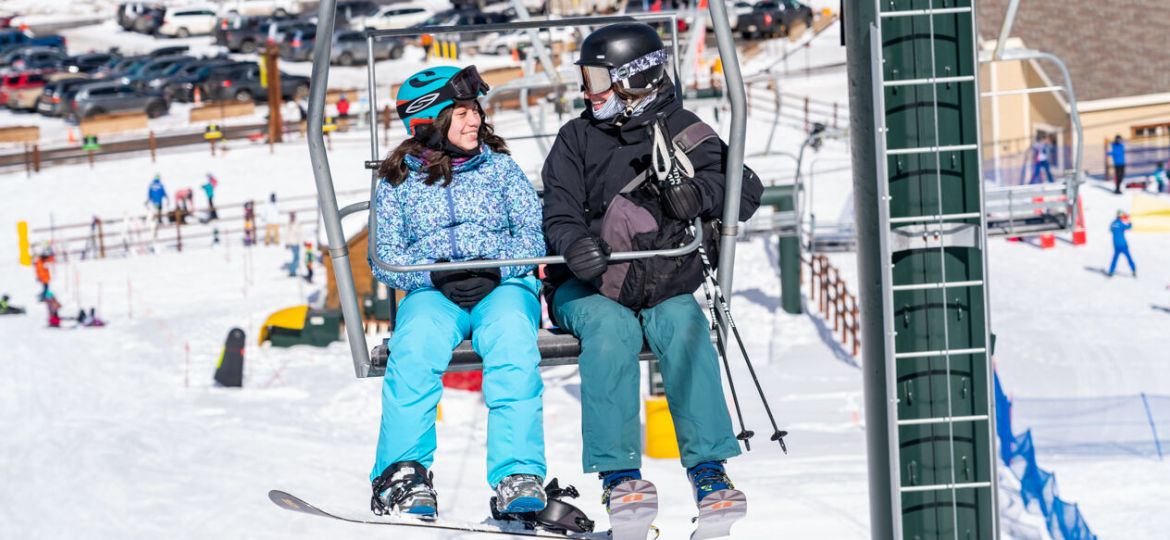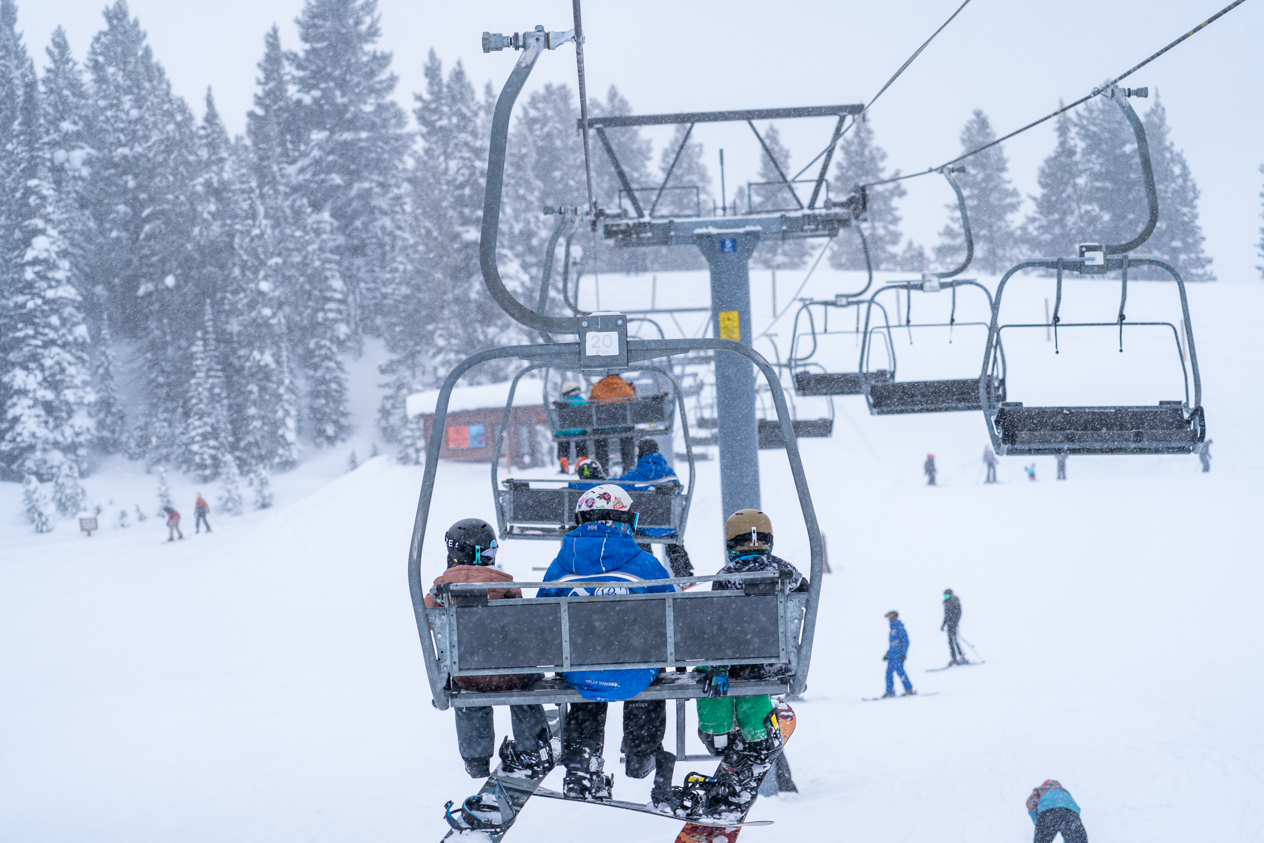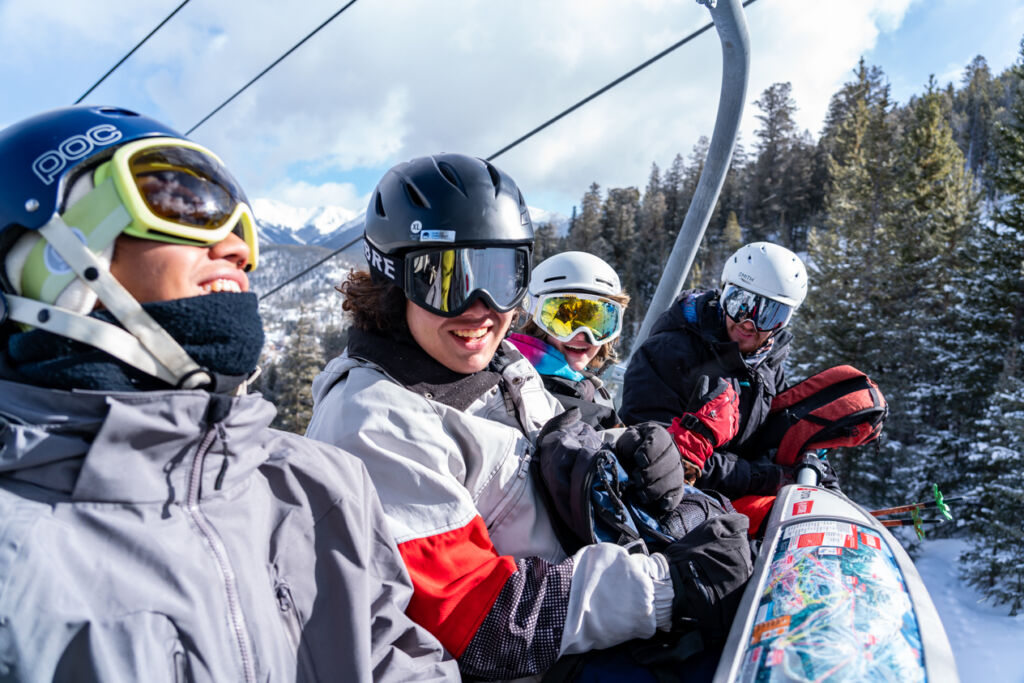
The Power of the Chairlift Conversation
There’s something special about sharing a chairlift ride to the top of a mountain. Despite being situated precariously high off the ground below, you bask in the shared experience of a passion for a mutual activity and a love for being in the mountains. What’s remarkable about this experience is it that lends itself to a deepened sense of camaraderie, togetherness, and even, at times, vulnerability.
We hear from mentors time and time again, that it’s nearly always on the chair when their mentees begin to open up and authentically share what’s going on in their lives, whether it be challenges at home, aspirations to try out for a sports team at school, or even struggles with their mental health. For a brief couple of minutes, mentors are able to dive deep into the conversations that matter – conversations that positively transform life trajectories. As soon as they disembark, the discussion goes on hiatus, and mentors and mentees return to the joyful bliss of sliding on snow knowing that they can pick back up where they left off or simply move on to other topics on the next ride up.
We know from experience that the chairlift creates a unique and safe space for open conversation, but why? In today’s post, we take a dive into understanding the power of the chairlift conversation.

In the context of a chairlift, how might proxemics play a factor in enhancing open communication between a mentor and mentee? We can first identify physical proximity as a primary factor in increasing open conversation. When sitting on the chairlift, you’re often sitting within four feet or less of one another. If the chair is full, then you’re sitting shoulder to shoulder with little space in between. Communications scholars define “personal space” as being between one to four feet apart. Dr. Hans, who authored an academic report on nonverbal communication, states that interacting with someone in your personal space “facilitates conversation, self-disclosure, and feelings of closeness.” In short, simply sitting close to one another increases the odds of sharing a meaningful conversation.
Now let’s take this a step further. A mentor and mentee are taking a ride up Vail’s Avanti Express lift, they are sitting within four feet of each other, but how are they sitting? This isn’t meant to be a trick question – they’re sitting next to each other of course. This is an important distinction as opposed to sitting facing opposite one another. Studies summarized in an article in Psychology Today have shown that sitting next to one another increases cooperation, facilitates better communication, and reduces perceived power dynamics. Conversely, it’s been shown that sitting opposite one another can create a more adversarial environment thus negatively affecting communication. For kids and teens in particular, reducing the perceived power dynamic in conversation is critical because it makes communicating with an adult feel less threatening or intimidating. Furthermore, in certain circumstances, sitting next to one another has the additional benefit of eye contact being optional. While making eye contact often improves communication, for youth with ADHD or autism, eye contact avoidance can actually be especially helpful in facilitating meaningful dialogue.

From an anecdotal perspective, North Lake Tahoe SOS mentor, Katie Biggers, says that all of these factors have led to her being able to have meaningful discussions with her mentees. “I’ve been a mentor for a number of years now and been with my current group of mentees for four years,” says Biggers, “it’s definitely taken time for us to build trust and open up so it’s not like the chairlift is some magical place where you can immediately be vulnerable. But our conversations on the chair have definitely been pivotal and provided a safe space to have some really hard, but powerful conversations.”
Biggers also suggests that sharing a mutual experience is a key factor in opening up a conversation. “In our everyday lives, my mentees and I may not have much in common, but on the mountain, we’re all out skiing and riding together. Sharing this activity is great because it automatically creates common ground and gives us something to talk about, whether it’s the snow conditions or what run we want to do next.” Biggers says that even just being able to talk about something like skiing can serve as a great launching point into something deeper. “It might start with skiing, but throughout the day our conversations evolve to the point where my mentees are opening up and sharing more about their lives outside of SOS,” she says.
Ultimately at the end of the day, Biggers doesn’t lose hope if her mentees don’t want to open up right away, but when they do, she’s always ready to listen. “It’s not my job to pry, but it is my job to create a safe space where my mentees can be themselves and express themselves authentically,” she says, “… and while I value so many parts of mentoring for SOS, the chairlift conversations I’ve had with my kids are something that will always stick with me.”
To sum it up, chairlifts are a great space for facilitating conversation but they are just one piece of the puzzle. These conversations wouldn’t happen without the outdoor access provided by our mountain partners, the programs managed and organized by our SOS program team, and of course, the time and dedication of our volunteer mentors. At SOS, we are committed to helping youth thrive, no matter their life circumstances, and we are eternally grateful for our mentors who help make this commitment a reality, one chairlift ride at a time.

